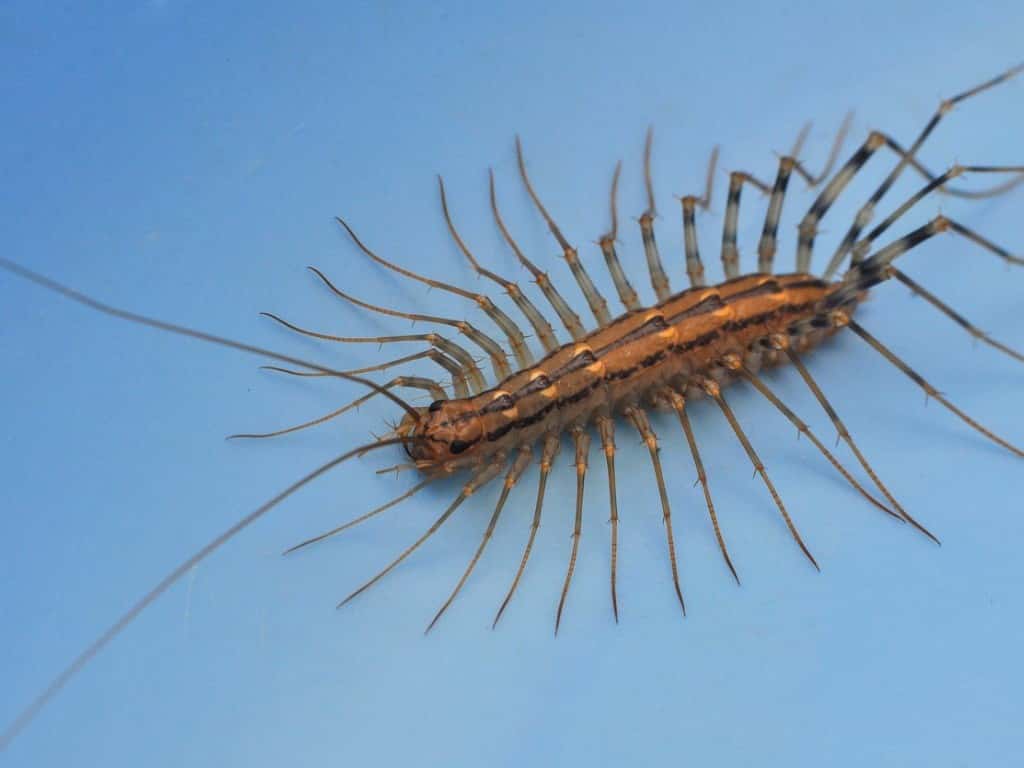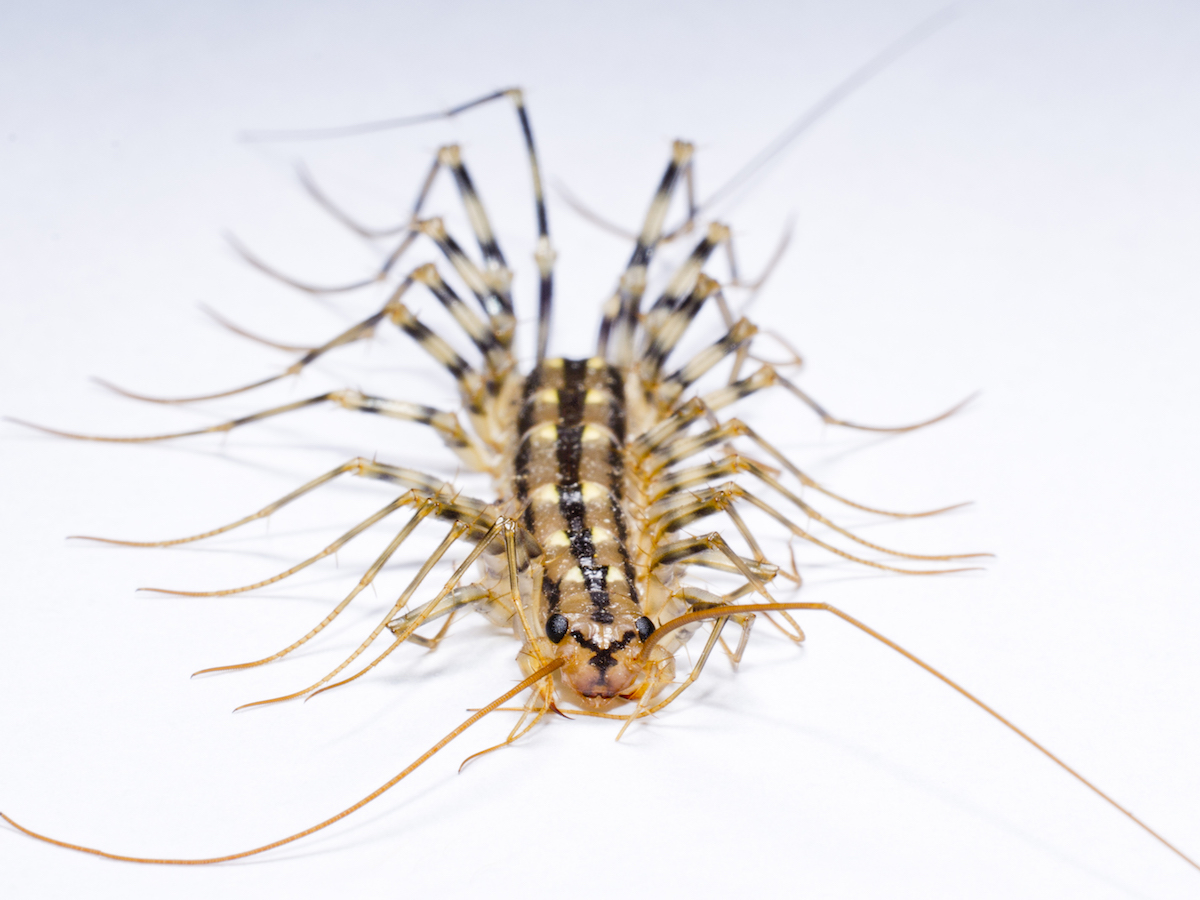Table Of Content
If they make their way into your home via a crack in the foundation, you might find one in your basement, bathroom, bathtub or another moist area. Their round heads point downward and they don’t have forcipules because they don’t have to attack the damp, decaying wood and leaves they prefer to eat. Harborage reduction is the second most important management tactic.
Which Centipedes are Poisonous?
These nocturnal creatures prefer to live outdoors under rocks and logs, but may venture indoors if conditions are right (plenty of darkness and moisture). They’re venomous and bite, though males and females have different types of venom. These centipedes have long, fluffy, tapering legs that undulate as they move. Although they can be startling, these centipedes are generally harmless to humans and are a natural form of pest control for more harmful bugs that can cause damage to your home or your health. Centipedes, with no shortage of legs and alarming speed, seem to have been designed to make squeamish homeowners shriek.
How To Keep Centipedes Away

They do try to avoid human contact but if they have no other choice they will try to bite. Centipedes are also surprisingly fast and try to avoid any human contact so keep your eyes peeled. Centipedes are also more active at night, so they are able to get around mostly out of a human’s way.
What Eats Centipedes and Millipedes?
The brown centipede (Lithobius forficatus) originated in Europe, where it’s so widespread it’s known as the common centipede. In North America, it’s most likely to be found on the Eastern Seaboard. It’s only one inch long and uniformly brown, with long antennae and a really long tail. It bites, and the two-pronged tail can deliver a painful and possibly dangerous sting.
Small brown house Centipede crawling on a baseboard.
The Florida blue centipede in the Southeastern U.S. is the exception, as its bite can cause a reaction like a bee sting. House centipedes don’t harm or destroy stored products, fabrics, pets, humans, or the structural integrity of your building and are generally only considered a nuisance. All house centipedes are venomous, but they typically run away from humans, and they very rarely bite. A house centipede, Scutigera coleoptrata, is a common arthropod that lives mainly in homes, and it isn’t aggressive or highly venomous to humans. Its diet consists of spiders, termites, roaches, and even bed bugs.
Centipedes typically overwinter outdoors in protected situations and lay their eggs during the summer, usually in or on the soil. Females of Scutigera have been known to produced 35 eggs over a period of days. When the lights dim and the moon rises, nocturnal-hunting centipedes spring into action. This may be due to damp or humid conditions in the bedroom and enough of a hiding spot to stay away from bright lights. Without food, Centipedes will move out of the area in search of a steady food source.
Make sure to also check on the inside of your home in basements, garages, and attics as you may be able to find a problem inside. Lastly, Centipedes need a place to spend the day that is away from other predators, humans, and sunlight. Any type of moisture, standing puddles, dripping water, or standing water can come from a multitude of different places inside and around the home.
Getting rid of the Centipede’s source of food, means that the environment will not be ideal for Centipedes to want to stay. However, this only works if you have a smaller population of centipedes, and if you are ok with sharing your house with the centipedes for a bit. If you have large amounts of centipedes in your home you have several options. You can try to catch them yourself using sticky traps and then throwing them away once they have been caught.

It is the only centipede found in Michigan that is capable of reproducing indoors. This arthropod has venomous fangs that are so small the venom doesn’t pose much danger to humans. If you find one in the house, it will be in the basement or some other dark place. Consider yourself lucky, because it’s ridding your house of pesky insects. It likes moisture and usually burrows under logs and other wet forest litter.
An infestation can cause anxiety for a lot of people when they come across these crawlers. Centipedes and millipedes are the next classification of pests on THE MOST UNWANTED LIST. They are both found here in all areas of the Las Vegas Valley. Whether you live in Centennial Hills or Green Valley they can frighten you if you encounter them in your home. In the event of a centipede bite, it is always best to contact a health care professional.
House centipedes are not likely to bite, but some larger centipedes may bite when handled, causing a sharp pain. The first thing you notice is that the house centipede has a lot of legs. The very name “centipede” hints at that since “centi-” means “hundred.” Although it looks like it has a hundred legs, the fact is that the house centipede has 15 pairs of legs. It also has two very long antenna on its head and two long appendages on it’s rear-end.
Why you should let this creepy bug live in your house - WGME
Why you should let this creepy bug live in your house.
Posted: Thu, 05 Jul 2018 07:00:00 GMT [source]
Other larger species of centipedes can inflict painful bites that do break skin and cause swelling. Most often though, it is the house centipede that homeowners notice invading their homes. They mostly feed on other insects like spiders and flies, but are also known to feast on plants. They can be easily spotted, though they are rarely seen by home owners due to their nocturnal nature. Centipedes can have over 100 pairs of legs and the largest species can grow up to 12 inches in length! While larger species can grow extremely long, house centipedes are usually 1 1/2 inches in length and very quick, making them even more difficult to spot.
Centipedes will be drawn to the large amount of flies and spiders that are in turn drawn to the trash that has been left out. If you are experiencing problems with centipedes in the Sacramento area contact Fast Action Pest Control for a quick response. Looking for northern ghost centipedes (Scolopendra cf. aztecorum) at night in California. Not only can they provide recommendations regarding treatment, but they can also provide information to help you reduce the likelihood of secondary infection from improper wound care. They are both hunters and prey, so their lifespan can be cut short if they get caught in the wrong place at the wrong time.
House centipedes feed on silverfish, firebrats, carpet beetle larvae, cockroaches, spiders, and other small arthropods. If house centipedes are seen frequently, this indicates that some prey arthropod is in abundance, and may signify a greater problem than the presence of the centipedes (Figure 3). This means eliminating roaches, silverfish, flies, moths and the other tasty insects that house centipedes love to snack on. Sticky traps, vinegar, cedarwood spray, salt and/or baking soda sprinkled on thresholds and in corners, and the aforementioned diatomaceous earth are all safe methods for eliminating these pests. Still, house centipedes are basically harmless to humans, and they're effective predators of other insect nuisances, including roaches, flies, silverfish, and termites.
University Professor Discovers Rare Venomous Centipede In UK Toilet - Zenger.News
University Professor Discovers Rare Venomous Centipede In UK Toilet.
Posted: Wed, 24 Jan 2024 08:00:00 GMT [source]
Their long legs and high speeds often alarm people, causing them to be crushed or sprayed. Some of the plates covering the body segments fused and became smaller during the evolution to the current state of S. The resulting mismatch between body segments and dorsal plates (tergites) is the cause for this centipede's rigid body. But if you find creepy-crawlies just too disturbing to live with, there are several things you can do to rid your spaces of centipedes. Centipedes are long and move quickly, thanks to all those legs propelling them forward.
They occur in several colors and patterns but most common are brown and reddish orange. What Orkin DoesCentipedes are a diverse group of Arthropods with a range of behavioral characteristics. Therefore, when centipedes become a problem, the first thing to do is contact your local Orkin pest management professional and request an inspection. Once the inspection is complete, your Orkin technician will prepare a centipede treatment program designed to control the centipede species causing problems. They eat a wide variety of pesky bugs, including flies, ants, moths, silverfish, spiders, and cockroaches. The average female house centipede can lay between 60 and 150 eggs at a time.






















